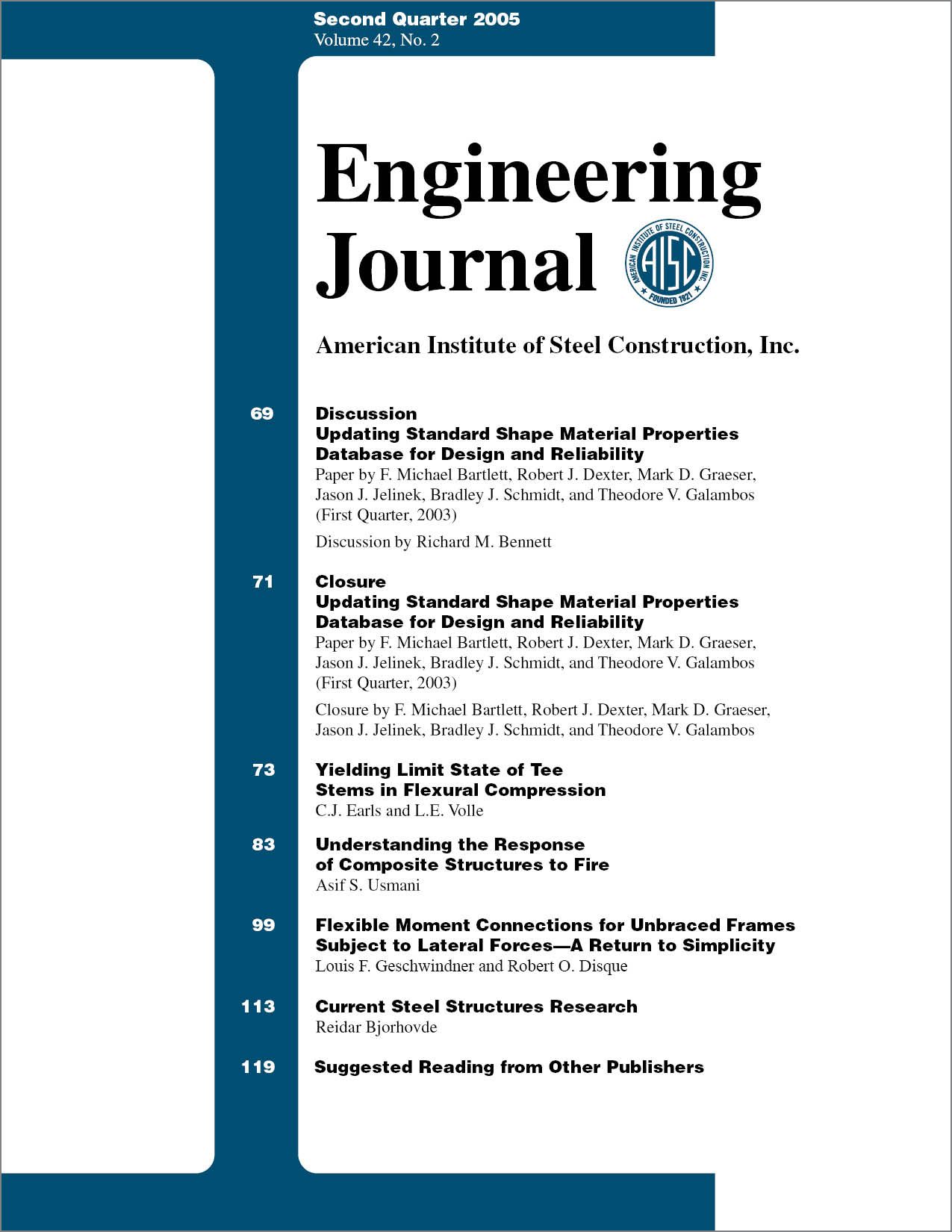Understanding the Response of Composite Structures to Fire
DOI:
https://doi.org/10.62913/engj.v42i2.849Abstract
This paper provides a general introduction to the intricacies of the behavior of composite structures exposed to thermal loading from fire. This is not a topic many structural engineers often deal with as part of their normal practice. However, even the engineers who do have to address this issue generally follow entrenched code-based prescriptive procedures. These procedures generally require them to protect the steel based on furnace testing of individual members. The actual structural behavior is hardly ever a part of this assessment. Fortunately there is considerable interest internationally to moving towards a more rational approach for designing structures for fire, particularly within the performance-based design context. This has lead to considerable recent research in this area in the United Kingdom and Continental Europe. The University of Edinburgh has been a major contributor to this new work. This paper provides a brief description of the research that has taken place in Edinburgh and the new knowledge that has accrued from it. This work quite clearly indicates that the traditional prescriptive ways of protecting structural members from fire are flawed, particularly if actual structural behavior in response to fire is ignored. In general this leads to higher costs for fire protection but potentially it could also result in catastrophic failures.

